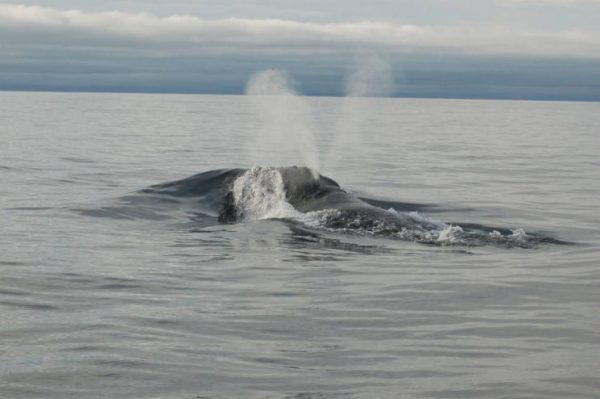
Federal researchers in the Bering Sea have released recordings of songs by some of the rarest whales in the world. While this is exciting news for marine science, it could point to heartache for North Pacific right whales.
For the first time, researchers have recorded and studied songs from North Pacific right whales. So far it seems limited to the Bering Sea.
“This behavior has not been documented yet in any of the other right whale species or populations,” said Jessica Crance, a NOAA marine biologist at the Alaska Fisheries Science Center’s Marine Mammal Laboratory in Seattle.
In 2009, researchers in the Bering Sea first noticed these sounds during summer surveys. Long-term data from acoustic recorders over eight years showed evidence of right whale songs — something heretofore unknown for the species.
This isn’t to say North Pacific right whales don’t make sounds.
“Within our population the most common call type is what’s called the gunshot sound,” she said.
Crance says the songs recorded are in many ways similar to the common gunshot calls.
“But they’re producing it in a very regular rhythmically pattern consistent manner. So the same number of gunshots, the same timing in between, and those patterns are repeated over and over for hours,” she said.
So what does it all mean?
First, it’s important to understand that North Pacific right whales are critically endangered. The name “right” whale is a vestige from the commercial whaling era, when they were considered the “right” species to hunt. Slow moving and buoyant, right whales remained afloat after being killed.
They were nearly wiped out in the early 20th century.
Now, with an eastern population of just 30 animals — they could be lonely. All of the confirmed recordings were from males possibly seeking female companionship.

“It’s difficult for us to know for certain why they’re singing,” Crance said. “But our best guess and our current hypothesis is that it appears to be some kind of a reproductive display.”
That’s the working theory for now and the one put forward this month in an article published in the Journal of the Acoustical Society of America.
But Crance told CoastAlaska there’s so much about these whales that’s not understood.
“We know that they are in the southeastern Bering Sea in the summer,” she said, “but where do they go when they leave or if they leave the Bering Sea is still unknown.”
Even their migration routes and their breeding grounds remain a mystery.
Hunting right whales in Alaska has been banned since 1949. But contemporary threats persist — mostly vessel strikes and entanglement in fishing gear.
Jacob Resneck is CoastAlaska's regional news director in Juneau.




